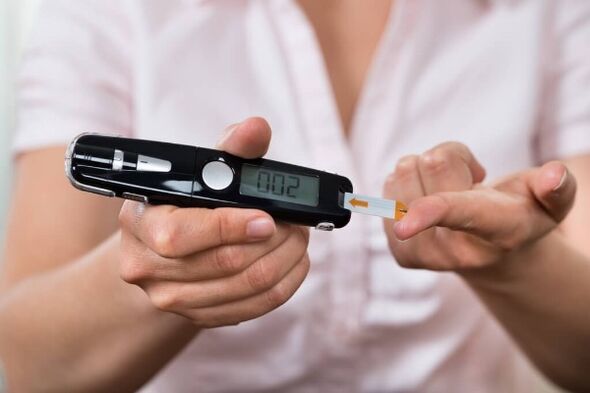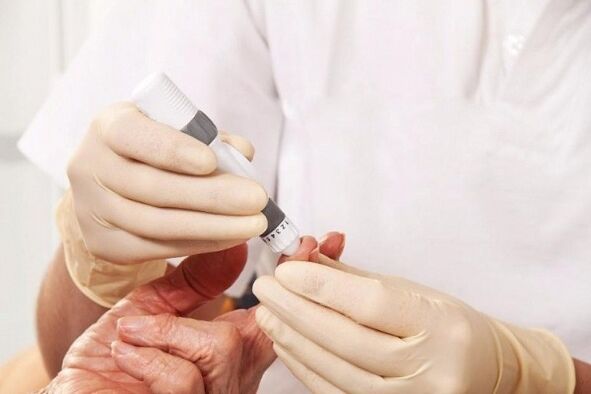According to statistics, in recent years, humans have often encountered diabetes, which is a prevalence in the 21st century. Every year, the disease is getting younger and more and more patients die from complications. In this regard, it is important to understand which diabetes is Melottis, what types of diabetes exist and its differences.

Types of diabetes
Diabetes pathology is the collective name of the entire disease. In medicine, diabetes is habitually released. The term itself is represented by a list of diseases with common characteristics. Diabetes and species are characterized by the pathogenic value of glucose in the blood.
There are many factors, which is why insulin cannot deliver glucose to blood cells, and the results are always the only one - cells cannot be eaten normally while sugar saturates the blood.
When the sugar in the cell is not suitable, it is pulled by water. The blood-filled fluid passes through the kidneys, causing dehydration. Regardless of the type of sugar disease observed, the following signs appear:
- Dry mouth;
- The feeling of thirst;
- Go to the bathroom frequently and get plenty of urine out.
Various forms of diabetes are characterized by appearance, symptoms and treatment.

Classification of diabetes
How many types of diabetes sugar exist? First, diabetes is through types of sugars related to sugars and non-Ahabia-related sugars. Sugar types already have certain types of diabetes and their differences.
- SD 1 Form.
- SD 2 Form.
- Specific types of pathology.
- Pregnancy form.
In terms of severity, diabetes is distinguished by type:
- Light;
- Medium;
- Thick shape.
Regarding salary status, they distinguished:
- compensate;
- Subcompensation;
- The compensatory form of the disease.
It is important to consider each type of diabetes and its characteristics.
Type 1 diabetes (insulin-dependent)
The first type of diabetes is often called autoimmunity or pancreatic damage produced by insulin. In patients with 1 diabetes type, insulin deficiency or insufficient.
According to statistics, the disease manifestations of young people this year are now occurring today. The first table has the following symbol:
- Lose weight quickly;
- Thirsty;
- Frequent impulse to the toilet;
- The feeling of hunger;
- The occurrence of acetone in acetone.
This type of pathological treatment means the introduction of the necessary dose of the hormone. The rest of the treatments were ineffective.
The development of the first type of disease occurs due to genetic factors. Furthermore, provocateurs are many negative reasons starting with impaired immunity. The process of diabetes is sudden and obvious. The sugar indicator is very high, reaching 30 mmol/L. But without insulin, the cells are still starved.

Pancreatic cells deform, producing sugar. The lack of hormones makes it impossible to use carbohydrates, and the lack of energy attempts to compensate for fat processing.
The first type develops in the presence of:
- Infect;
- pressure;
- A sedentary life;
- autoimmune process;
- Genetic tendency;
- Inappropriate nutrition.
In the absence of proper treatment, consciousness is inconsistent until diabetes is in a coma, and is developing rapidly. Then, if you do not fully treat diabetes in adults, it will quickly lead to disease in almost all systems and organs, i. e. disability.
With the development of childhood diseases, physical and psychological levels, and later adolescence, the development of infantism lags.
The only treatment is to introduce insulin into subepithelial injection. Today, glucose has not been introduced many times. There are analogs introduced once a day or once a day for 3 days. The insulin pump is effective and continuously introduces glucose during the day.

Various forms of the disease are potential autoimmune diseases in adults, characterized by reduced sugar value and normal weight in the patient. In this study, pancreatic cells were found to be pathologically found in the second form, but there is one form.
It is important to diagnose the disease in a timely manner, because treatment means introducing insulin. Tablets that reduce sugar in this case are not allowed.
Type 2 diabetes (insulin-dependent)
Second-level diabetes is not absolute, but insulin inferiority. This indicates that insulin is secreted in normal, excessive volumes. Cells are resistant to their effects.
Sometimes the species is associated with obesity. In this position of glucose secretion, it is not enough to inadequate all current fat deposits. Unlike 1 form, 2 types of mature years are formed. Male gender after 40 years of age, in the late climax phase, women face problems when they observe recombination at the hormonal level.
The development of both forms of diabetes is not so fast compared to 1 type. This disease is usually gradually formed, with weak signs and less than 1 form of pain.

The main manifestations of the disease include:
- Dry mouth;
- The amount of urine increases, which allows the patient to enter the toilet late at night;
- Strong desire to drink;
- Itching of the mucosa;
- The desire increases.
After the disease, obesity leads to the development of hypertensive diseases, thereby increasing the pressure of high value. When diabetes, obesity and hypertension together cause burdens on each other, a vicious cycle will form. The risk of heart attacks and stroke is also growing rapidly.
If the disease is not treated, an irreversible phenomenon occurs in the nerve fibers, liver, kidneys, and retina. In most cases, two forms of vascular disease can cause complications - nutritional ulcers appearing in the lower leg, gangrene leg.
When 2 SDs are easily normalized, enough kilograms to discard. It was only at first. After a lack of glucose, it will require drugs that lower sugars in the sugar. Pills can stimulate sugars in beta cells to synthesize sugars, thus covering their deficiency.

But then, due to multiple stimuli, complete depletion of cells and complete lack of glucose formation is possible. High indicators and complications relative to internal organs can be used as indicators of the transition from pills to insulin. Therefore, usually, patients are destined to continue using insulin. Therefore, among the two types of diabetes, the first is insulin-dependent, while the second has 2 stages, and the developmental properties are insulin-dependent and insulin-dependent.
Specific types of diabetes
A specific group of diabetes types associated with other factors. Types of diabetes:
- Genetic defects in pancreatic cells and insulin effects.
- Diseases in the exocrine part of the gland.
- Endocrine disease.
- SD, caused by drugs, chemical elements.
- injection.
- Unusual types of immune diseases.
- Hereditary symptoms combine with diabetes.
Diabetes is formed by the type of genetic defects in pancreatic action and insulin action, which is formed by mutations in genes that cause glandular function.
Diseases in the exocrine part of the pancreas mean inflammatory processes of iron, damage, and tumor formation. When some organs are affected, sugar productivity is also affected, and the service station leads to the emergence of diabetes. Treatment is subject to alternative work, and glucose is introduced.

Diabetes Diabetes performed by endocrine therapy type are characterized by excessive hormone manifestations. Hormones can negatively affect sugar exchange by increasing indicators, causing insulin resistance and inhibiting exposure to sugars. As a result, a specific form of diabetes occurs.
Diabetes is a type of diabetes caused by drugs that increase sugar and cause insulin resistance.
Usually, diabetes initially develops after viral lesions because the virus can surprisingly affect pancreatic cells and promote damage in the immune system, thus starting a process similar to the process of form formation.
- Adenovirus.
- Cytomegalovirus.
- rubella.
- piggy.
In rare cases, diabetes is observed due to the formation of antibodies to glucose and its receptors. This receptor is a target of glucose, and through its cells it will be affected by. When these phenomena are violated, sugar cannot perform its work naturally and therefore develops diabetes.

Gestational diabetes
The species develops during pregnancy. Due to sugar productivity, the disease develops necessary to regulate glucose in the blood.
During pregnancy, the female body is forced to produce a lot of sugar, which provides the baby's needs. This process is especially important in the second stage of pregnancy.
The value of sugar has been growing when glucose is lacking, providing the possibility of developing gestational type diabetes. After a child is born, the pathology usually disappears by itself. This is a characteristic that distinguishes this type from other species with chronic flow.
Non-Adal diabetes
The non-naga form of the disease is also called urinary sugar. There are no typical signs of pathology. Main functions include:
- Polyuria, characterized by the volume released in the urine, far exceeds the norm.
- Multiple - Absorbs a large amount of fluid.

With the disease, patients with diabetes have observed:
- Dry skin;
- Stomach stretches, lowers;
- Weight loss;
- Reduced pressure;
- The urogenital system is affected (girls face behavior that violates menstrual cycles, and in men, their effectiveness is reduced);
- Children's Ennas worry that growth and development are delayed.
Non-calibrated therapy can receive vasopressin in the form of a spray in the nose or in the pill.

























